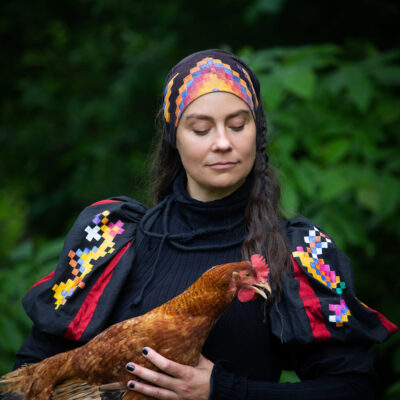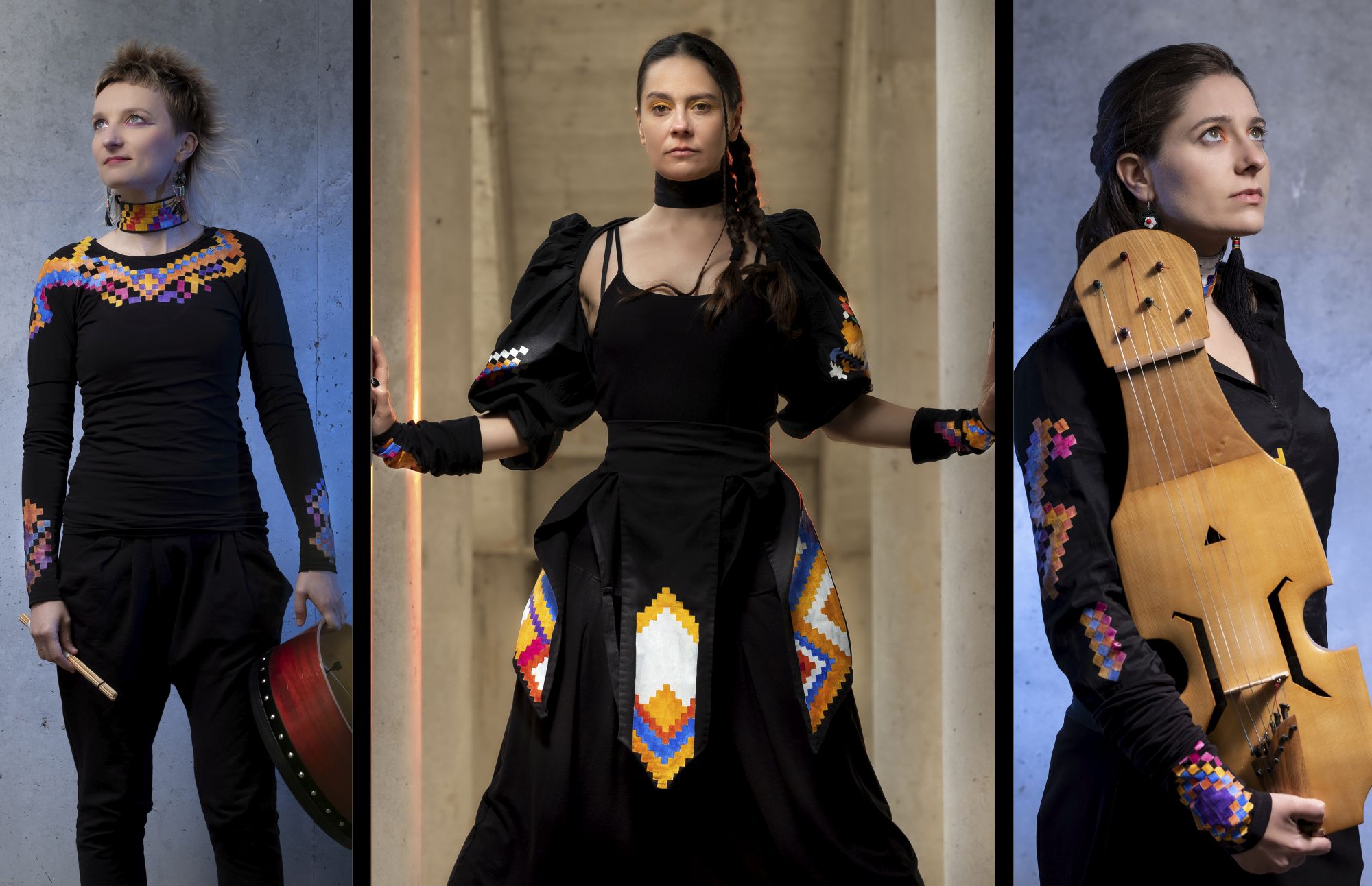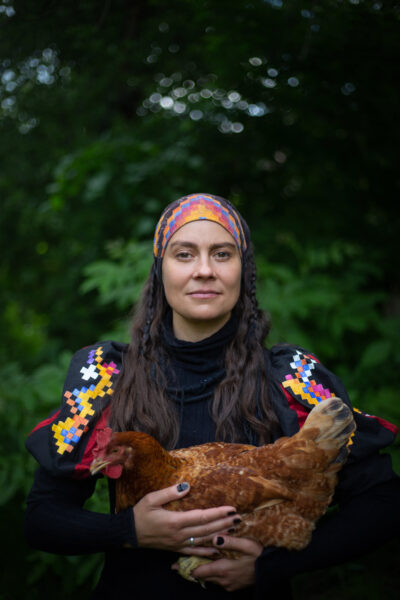Nature, hope and striving for a better world – the interview with Karolina Cicha
Karolina Cicha is a music composer, vocalist and multi-instrumentalist.
One of her distinctive features is a creative technique of playing several instruments simultaneously. She has won many awards. In 2015, she performed at the official showcase of WOMEX – the largest annual international music summit. With her music she has visited dozens of festivals in Europe, Asia and America. Her album “Tany” was nominated for the Fryderyk (the annual award for Polish musicians), in the category: Folk/World Music. Her new album “Karaimska Mapa Muzyczna” will be released soon.
Folk music is the music of the common people and seems to be a genre quite close to nature.
One way or another, the music of a given region tells us about its landscape. I listen to the music from all over the world and can hear not only the language people speak or their emotions, but also what they see and experience. Of secondary importance is the landscape type, a desert or a primeval forest. In the case of the latter, people sing very loudly to be heard, as those in Poland’s ethnic region Kurpie who use the traditional singing style – white voice. In traditional music, you can hear distinctively the landscape and nature that surrounds man.
When it comes to the Podlasie, what can you hear in its music?
Wooden instruments and what else?
Yes, on the one hand, there sound specific instruments, and on the other – the style of singing is distinctive. White singing is loud so as to get through tree stands and to be carried all over the wilderness. One can also hear our Slavic melancholy, a kind of reverie, one-and-only way of profound experiencing the world and human life.
The Podlasie region is very close to you, which is clearly reflected in your music. What first comes to your mind when you hear the word “Podlasie”?
To begin with, I recall the band Małe Kurpie, who I sang with when was seven years old. I also think of the river Narew and the National Park. I remember first trips to the river with my parents, at times before the designation of the National Park. And, certainly, there comes to my mind the forest around the town of Tykocin and many hours of solitary escapades, still as a child, with dogs. I think of rescuing roe deer from snares – my childhood adventure – or bringing home various gifts of nature, big and small. There rested a huge part of a willow tree on my piano. A bolt of lightning struck the willow and split it into four pieces, one of which I dragged home – it was the size of me! I lugged it along the road Warsaw-Bialystok, in the forest near the town of Choroszcz.
It must have been an interesting sight!
Indeed. The willow fragment rested on my piano when I was a school student and a university student. I recall arranging dry bouquets and gardening. My mother ran a perennial nursery, so since I was a kid, I have been digging in the soil. My grandparents cultivated red currants, and I helped harvesting every year, for two weeks during the season. There was always a lot of nature around!
I always return to the village of Stelmachowo. My childhood land is this settlement nearby Tykocin, also my beloved place, where my grandparents used to take me. I still remember this town from the times when it was not a popular tourist destination, but just a small town with an amazing atmosphere. Now, historic sites are beautifully restored, the castle is rebuilt. Back then, there were just ruins.
You have been inspired by the minorities living in the Podlasie region – presently, you are involved in the project “Karaimska Mapa Muzyczna”, ” which aims to release a CD with the music of the Karaites. Please tell us more.
The project was instigated by the Karaim Association in Poland. As I was already proficient in Tatar language, similar to that of Karaim community, I was acknowledged as someone studying the music associated with Crimea. Karaites were influenced by Crimean music. The album is a bit a side effect of the pandemics. During the shutdown, I had plenty of time to go through archives, dig deep into Karaim culture, and select songs.
The album will be released this year.
Yes, there is a pre-sale for the album right now in the form of a preorder. The album will come out in the fall. When I return from EXPO 2020 Dubai, on 7 October, there will be a premiere of the album “Karaimska Mapa Muzyczna” (Karaim Music Map).
You and Wiktor Szczygieł – Swada created the music for the Xylopolis exhibition.
How did you start with this collaboration, what were your assumptions, what did you want to convey?
The music frame was created by Swada – he is a composer of the music and the producer. My task was to write melody for vocal parts and lyrics. First of all, I attempted to reflect nature, and so there are sounds of traditional music which is the equivalent of nature in the world of music. It seemed to me that it had to reverberate in the mass of electronic sounds. My lyrics reflect the past and the future. There are also nature, hope and striving for a better world. The lyrics are not straightforward, worth delving into.
The questions were asked by
Joanna Buharewicz
Photos
Tomasz Kaczor, Michał Heller


